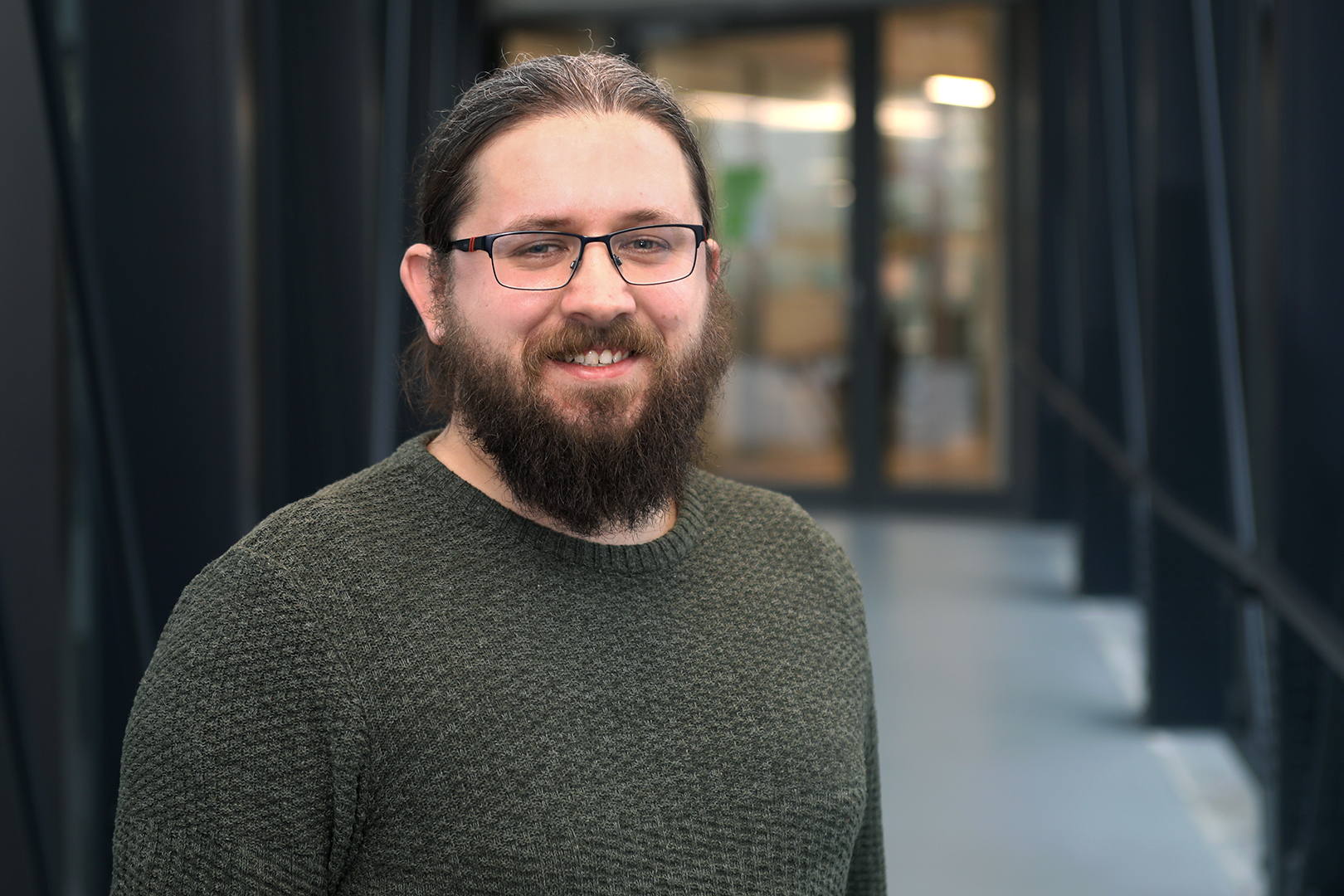Dr. Viktor Čolić - Electrochemistry for Energy Conversion

- Dr. Viktor Colic
- Research Group Leader
- Electrochemistry for Energy Conversion
- +49 (0)208 3798235
- viktor.colic(at)cec.mpg.de
- Room:
Vita
Publikationen
Publications
Full publications list | ORCID | ResearcherID | Google Scholar Profile
Selected MPI CEC publications
- Wittmar, A. S. M., Vigneswaran, T., Rankovic, N., Hagemann, U., Hartmann, N., Martinez-Hincapie, R. A., Colic, V., Ulbricht, M. (2023). N-Doped porous carbons obtained from chitosan and spent coffee as electrocatalysts with tuneable oxygen reduction reaction selectivity for H2O2 generation. RSC Advances, 13(33), 22777-22788. doi:10.1039/d3ra02587j.
- Wegner, J., Martinez-Hincapie, R. A., Colic, V., Kleszczynski, S. (2023). Additively Manufactured Iron-Based Bulk Metallic Glass Composite Electrocatalysts: Effect of Microstructural States on the Oxygen Evolution Reaction Activity. Advanced Materials Interfaces, 2202499(10) pp. 1-11. doi:10.1002/admi.202202499.
- Ramesh, V., Stratmann, N., Schaufler, V., Angelov, S. D., Nordhorn, I. D., Heissler, H. E., Martinez-Hincapie,R.A.; Colic,V.; Rehbock, C.;Schwabe, K.;Karst, U.;Krauss, J.;Barcikowski, S.; (2022). Mechanical Stability of Nano-Coatings on Clinically Applicable Electrodes, Generated by Electrophoretic Deposition. Advanced Healthcare Materials, 11(23): 2102637, pp. 1-11. doi:10.1002/adhm.202102637.
- Firat, Y. E., Colic, V. (2022). Electrochemical Deposition of Multicomponent Mixed Metal Oxides on rGO/Ni Foam for All-Solid-State Asymmetric Supercapacitor Device: Mn, Co, and Ni Oxides with Ag Doping. Energies, 15(22): 8559, pp. 1-15. doi:10.3390/en15228559.
- Martinez-Hincapie, R. A., Colic, V. (2022). Electrocatalysts for the Oxygen Reduction Reaction: From Bimetallic Platinum Alloys to Complex Solid Solutions. CHEM ENGINEERING, 6(6): 1-9. doi:10.3390/chemengineering6010019.
Group members
Electrochemistry for Energy Conversion
The Electrochemistry for Energy Conversion group primarily aims to utilize electrochemical methods coupled with surface science and other instrumental analysis techniques to investigate the links between surface and electrolyte properties and electrocatalytic activity. The focus is on reactions that are of interest for energy conversion, storage and utilization. Applications and inquiries from highly motivated master students are welcome. Generation of fuels from electricity One of the proposed ways of addressing the challenges of the intermittency of renewable energy sources is the development of the so-called “Hydrogen Economy”. In this concept electricity from renewables at peak production would be used to produce hydrogen by water electrolysis. Such hydrogen could later be used in fuel cells to generate electrical energy, thus allowing energy storage from renewable energy sources.
The reactions taking place in an electrolyzer are the oxygen evolution reaction (OER) and hydrogen evolution reaction (HER), while in a fuel cell they are the oxygen reduction reaction (ORR) and the hydrogen oxidation reaction (HOR). In both cases the oxygen-reactions (OER and ORR) have slower kinetics and are the bottleneck to making these devices more efficient. Additionally, the catalysis of these reactions often requires costly noble metal catalysts (such as Pt), so there is considerable interest in finding more economical alternatives.
The Electrochemistry for Energy Conversion group investigates the influence of bi-, tri- and multicomponent alloys, surface and near-surface alloys, as well as surface structure and electrolyte composition on the electrocatalytic properties towards these key reactions. The group seeks to further the prospects of rational catalyst design by linking the activity, selectivity and stability of these catalysts to assessable physical properties.
Using electricity to produce wide-use chemical products
Another route for the utilization of electric power is the direct synthesis of wide-use chemicals. For instance, ORR can go through two different pathways, the so-called 4-electron one, which is desirable in fuel cells, and the 2-electron one which is not desirable in that case, but results in the generation of hydrogen peroxide, which is a widely used chemical an oxidant and a disinfectant. Therefore, a good control of the selectivity of ORR is of high interest for different applications.
Ammonia is the second most produced chemical in the world, and it is produced in the well-known and highly optimized Haber-Bosch process. Nonetheless, since the Haber-Bosch process requires high temperatures and pressures, it requires large centralized facilities. Therefore, there is certain interest in developing processes that could use renewable electricity and function in a more decentralized manner. Electrochemical ammonia synthesis in that sense would be an interesting option. While electrochemical ammonia synthesis has been investigated for decades, it suffers from very different challenges compared to, e.g., hydrogen peroxide production, which is already commercially applied to some extent. The lack of standards, protocols and general understanding of the challenges of the reaction have led to a general state of confusion regarding the viability of the process. Only recently have these issues been seriously addressed (see e.g. [2]) and the main challenge in this field is the proper, standardized, and reliable testing of catalytic systems. This should enable the creation of a much clearer picture about the potential, or lack thereof, of such systems.
References
[1] The Impact of the Electrode/Electrolyte Interface Status on the Activity, Stability, and Selectivity of Electrocatalytic Centers. V. Čolić, PhD thesis, Technical University of Munich, 2016.
[2] A rigorous electrochemical ammonia synthesis protocol with quantitative isotope measurements, S. Z. Andersen*, V. Čolić*, S.Yang*, J.A. Schwalbe, A.C. Nielander, J.M. McEnaney, K. Enemark-Rasmussen, J.G. Baker, A.R. Singh, B.A. Rohr, M.J. Statt, S.J. Blair, S. Mezzavilla, J. Kibsgaard, P.C.K. Vesborg, M. Cargnello, S.F. Bent, T.F. Jaramillo, I.E.L. Stephens, J.K. Nørskov, I. Chorkendorff,, Nature, 2019, 570, 504–508. (*these authors contributed equally)

![Figure 1: The proposed "Hydrogen Economy" cycle. Adapted from [1]](/fileadmin/media/Forschung/MPFS/Colic/Colic_Figure1_191204.png)
![Figure 2: The performance of different reported systems towards nitrogen reduction. Adapted from [2]](/fileadmin/media/Forschung/MPFS/Colic/Colic_Figure2_191204.png)